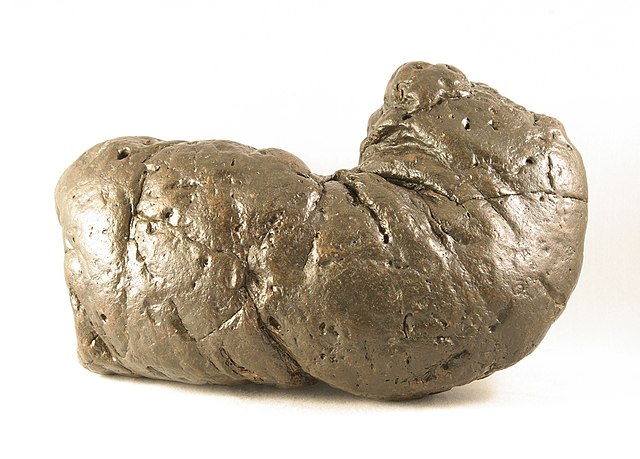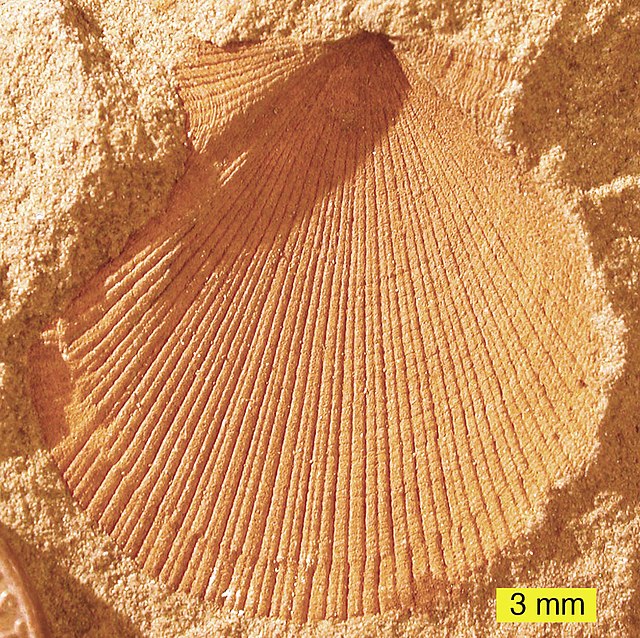A coprolite is fossilized feces. Coprolites are classified as trace fossils as opposed to body fossils, as they give evidence for the animal's behaviour rather than morphology. The name is derived from the Greek words κόπρος and λίθος. They were first described by William Buckland in 1829. Before this, they were known as "fossil fir cones" and "bezoar stones". They serve a valuable purpose in paleontology because they provide direct evidence of the predation and diet of extinct organisms. Coprolites may range in size from a few millimetres to over 60 centimetres.
A large coprolite of a carnivorous dinosaur found in Harding County, South Dakota, US. Photo courtesy of the Poozeum
A large Miocene coprolite from South Carolina, US.
A large coprolite from South Carolina, US.
A Miocene pseudocoprolite from Washington state. They are commonly mistaken for coprolites because of their appearance and shape; they are actually of inorganic origin. Scale in mm. See Spencer (1993).
A fossil is any preserved remains, impression, or trace of any once-living thing from a past geological age. Examples include bones, shells, exoskeletons, stone imprints of animals or microbes, objects preserved in amber, hair, petrified wood and DNA remnants. The totality of fossils is known as the fossil record.
Permineralized bryozoan from the Devonian of Wisconsin
External mold of a bivalve from the Logan Formation, Lower Carboniferous, Ohio
Silicified (replaced with silica) fossils from the Road Canyon Formation (Middle Permian of Texas)
Recrystallized scleractinian coral (aragonite to calcite) from the Jurassic of southern Israel








